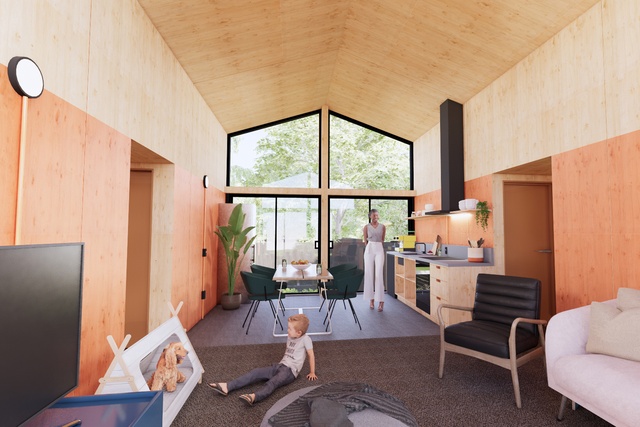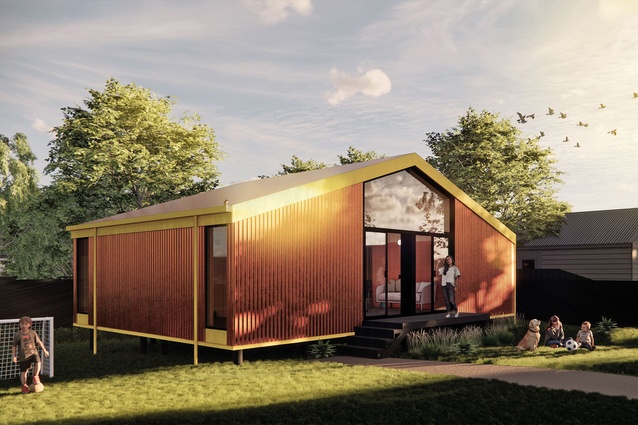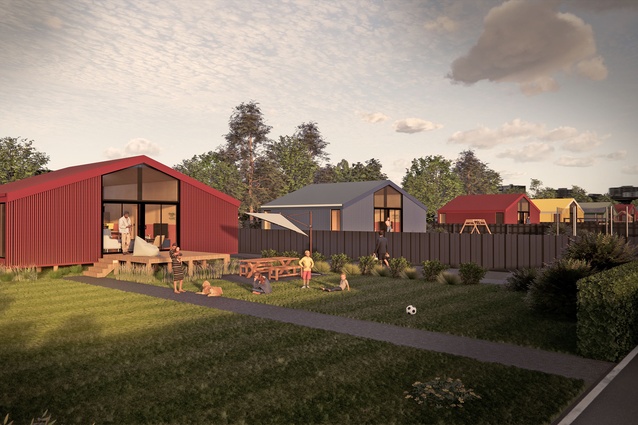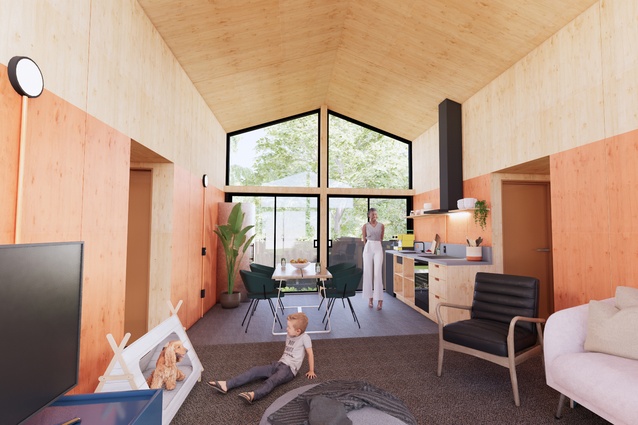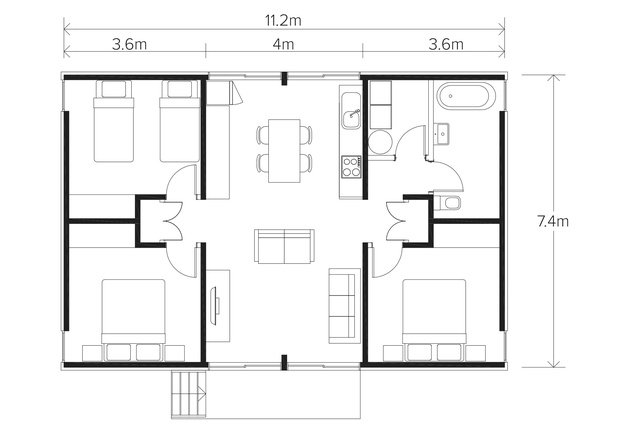Affordable house impresses global judges
Amongst this year’s World Architecture Festival short list was an unexpected find in the Future Projects - House category — a flat-pack home, called ‘The Living House’ designed by RTA Studio.

The current housing situation in Aotearoa makes for grim reading. The country’s housing crisis has seen the number of people sleeping in cars rise from 100 in 2017 to an estimated 500 today. Every morning, up to 4000 children wake up in government-paid motel rooms, as their parents wait for emergency housing to become available. These families are amongst the 27,000 New Zealanders currently on a waiting list for social housing. Auckland is the seventh-leastaffordable house market in the world, with houses at 10.8 times household income, and New Zealand continues to build houses with 19th-century technology, using carbon-heavy materials and with excessively high labour costs.
“Government-funded social housing is entirely built by private companies,” says RTA Studio director Rich Naish, “which subcontract out 80 per cent of the tasks, leading to margin upon margin. And labour makes up 40 per cent of the cost of a typical new house.”
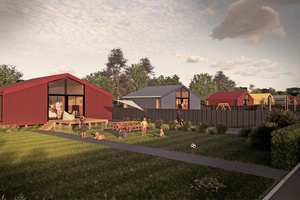
The Living House completely rethinks the methodology and materiality of building a three-bedroom stand-alone house in this country. “Starting with analysing traditional habitation priorities within the New Zealand demographic, then optimising the spatial and surface area analysis, we’ve designed and developed a three-bedroom house that requires the minimum quantity of material and can be built with the minimal quantity of labour,” explains Naish.
With the flat-pack CLT carbon-zero house comprising only 18 panel components in total, the architects have optimised the labour component to reduce from 5000 hours (typical of a New Zealand house) to 500 hours for The Living House. And the unit construction price has been reduced from $600k (for a typical New Zealand three-bedroom house) to $300k. “Yet it has the highest architectural qualities of scale, volume, natural light and ventilation,” Naish points out, “with world-leading integrated PV solar power and heating systems, making it net-zero operational and embodied carbon-zero at end of construction.”
The World Architecture Festival’s short-listing of this initiative acknowledges the value placed on architects stepping outside their traditional role to help address housing issues. RTA expects The Living House to be available from August 2025.
